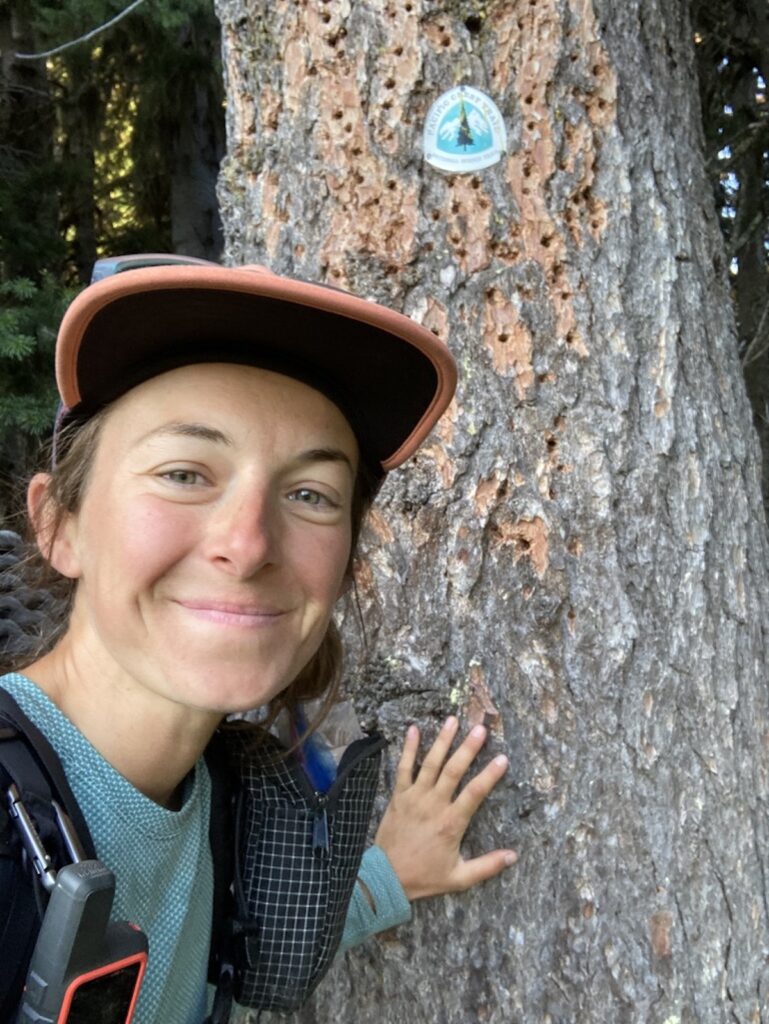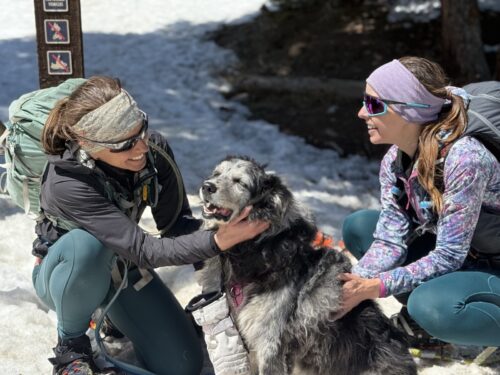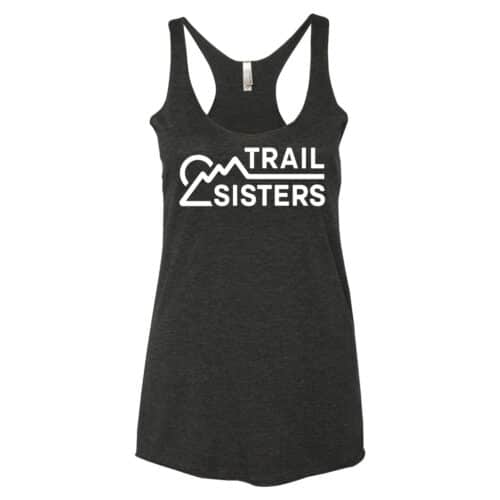Main Menu
Homepage / Coaches Corner / Creating Your Own Training Plan Specific to Ultramarathons
Creating Your Own Training Plan Specific to Ultramarathons

Kelsey McGill lives in Redmond, Oregon with her Lab Retriever and running partner, Oliver. Kelsey loves being outside and has completed many ultramarathons, thru-hiked several long trails, instructed for Outward Bound, and is eager to explore bikepacking. She is passionate about supporting others toward their goals in her work as a counselor or while coaching runners. She has a M.A. in Counselor Education, is a 200-hr Registered Yoga Teacher, and a UESCA Certified Ultrarunning Coach and is accepting athletes to support for coaching. You can find more at www.alpenglowendurancecoaching.com
Share This Article!


By: Kelsey McGill
Hello, and I’m glad you’re here! Over the years, I have primarily coached myself (and still do) for races as this works best for my approach to running. However, some thrive with having a coach. Essentially, it all comes down to personal preference. I’ll start by stating that there is no one-size-fits-all training plan, however, having some foundation to start with can be very helpful. I also want to address that hiring a coach can also be a financial barrier for many, and to create inclusivity in the sport I believe making resources accessible for all is important.
Please note that this is a very general training outline and doesn’t dive deeper into time-based or process-oriented goals, strength training, cross training, etc. If that is something you are wanting to hone in on, feel free to reach out to myself or any other professional coach to assist you.
Training Intensity Distribution
I’ll first touch on Training Intensity Distribution (TID) which is a concept that defines how much we train in low- and high-intensities. A common mistake that runners make is training at high intensities for long durations which can lead to a number of issues.
I have to give credit to David and Megan Roche (check out their book The Happy Runner or podcast Some Work, All Play) for this metaphor to think of training as a salad: 80% is leafy greens – running is eeeeasy (RPE 4-6); 15% is your toppings (whatever makes to excited) which is running at a moderate effort (tempo & steady state runs; RPE 7-9); and 5% is dressing – high intensity (i.e. running intervals RPE 10). Even though the dressing is all over the salad, you only need a small amount and it benefits all parts of the salad. RPE refers to rate of perceived exertion that is a subjective scale (1-10) of the runner with 1 meaning easy to talk with no effort to 10 meaning only able to say one word during exertion.
Least-to-Most-Specific Periodization Training Program
This training outline mostly follows a least-to-most-specific periodization training program meaning we start with low-volume and high-intensity and work towards low-intensity to high-volume to replicate the race’s terrain, environment, and effort. Start with identifying a goal race/distance you’d like to target. Ideally, this is at least 4 months out to create a helpful training plan. Please note that if you are new to ultrarunning and you don’t have much consistent aerobic conditioning, give yourself at least an additional 1-2 months (totaling 5-6 months before race day).
For those who need to create aerobic conditioning, start here. Aim to run 3-4 days per week with a RPE 4-6 (i.e. conversational pace). Have a rest day (or option to cross-train) between days to start, then work up to 5 days/week of running.
For those who are ready to start with the training plan, here we go! This will take some coordination with your schedule so it may help to create an excel spreadsheet. Ask yourself, “Which days are best for long runs?”, “Which days or specific dates are near impossible to get any training in?”, “What times of the day can I get my run in?”, “Are social/solo group runs preferred or a combination of both?”. Take note of these dates & days and write them in on your spreadsheet. You can then start to map out which days you’ll be doing specific workouts. You will likely start out with running 5-6 days a week, and ranging from running 1 hour to 5+ hours at a time. Typically, 3 days a week will be easy endurance runs (60 mins), 1 day of a longer endurance run (1.5 to 5+ hours), 1-2 rest days, and 2 days of running intervals/tempo runs/steady state runs. I’ll dive a bit more into interval work since the specificity of each of these will depend on which phase you are in during training.
Let’s start with running intervals (RI). RI are rated at RPE 10 (highest intensity) such as 10 x 400 meters with an equal rest in between and a warm up and cool down afterwards. Think high intensity for a very short time duration (1-3 minute(s) per interval). These are commonly placed at the beginning of a training program over the span of 4 weeks and are additionally added on at the end of most easy runs with strides throughout the duration of training.
As you move into tempo runs (TR), RPE will slightly turn down a notch to 8-9 and interval durations increase to 8-20 minutes. An example could be, 90 minute endurance run (ER) with 4 x 10min at TR pace with 5 minute recovery time between each set. TRs can coincide with steady state runs for the following 6-8 weeks of a training plan.
Taking it one step further, steady state runs (SSR) are at a 7 RPE and can have a higher interval duration (20-60 minutes). An example could be 2 hour ER with 3 x 30 minute SSR with a 5 minute recovery between each set. As you get closer to race day, mimic the race course terrain (i.e. is it mountainous, hilly, flat, etc.) when doing reps.
Endurance runs (ER) will be at a 5-6 RPE and can have the longest duration (30 mins-6+ hours). An example of this could be a 4 hour ER. For the last 8 weeks, you will be gradually increasing ERs which will also overlap with TR and SSR training periods. Sometimes athletes choose to have back-to-back long days whereas others prefer to have a long ER day followed by a rest day. Again, it comes down to personal preference and listening to your body’s needs.
With all that said, think high-intensity means the shortest time in that intensity, and low-intensity equates to the longest time in that intensity. Additionally, you don’t always need to separate TR and SSR from ER, you can integrate some interval work in your longer runs.

Here is an example of a what a training week could look like at the start of a training program vs. the peak of training:
Start of Program
| Mon | Tues | Wed | Thurs | Fri | Sat | Sun |
| 60 min ER (RPE 5-6)8×30 sec strides | 1.5mi warm up10x2 min (RPE 10) (2 min rest between each set)1.5mi cool down | 60 min ER (RPE 5-6)8×30 sec strides | 1.5mi warm up8x2.5min (RPE 10) with incline (2.5min rest between each set)1.5mi cool down | 60 min ER (RPE 5-6)8×30 sec strides Or rest | 2 hr ER (RPE 5-6) | 60 min ER (RPE 5-6)8×30 sec strides Or rest |
Peak of Training
Terrain should replicate race course terrain during peak of training 2-6 weeks out.
| Mon | Tues | Wed | Thurs | Fri | Sat | Sun |
| 60 min ER (RPE 5-6)8×30 sec strides | 2hr ER with 3x30min SSR (RPE 7) (5min rest between each set) | 60 min ER (RPE 5-6)8×30 sec strides | 2hr ER with 4x20min SSR of incline (5min rest in between each set) | 60 min ER (RPE 5-6)8×30 sec strides Or rest | 5 hr ER (RPE 5-6) | 60 min ER (RPE 5-6)8×30 sec strides Or rest |
Rest days
Ideally, rest days or easy days should fall between hard effort days. At any point if you notice pain or chronic fatigue that lasts more than several days, reach out for additional support. Generally, my approach is to take 3 days off if chronic fatigue or pain lingers and if this doesn’t improve after a few days, reach out to a professional (physical therapist, primary care provider, etc.). Life stress is not separate from training stress so the body will indicate if there is excessive load occurring and changing your training plan could prevent burnout, injury, illness, etc.
Rest week
There is a lot of personal preference that defines how often rest weeks occur and what they look like. Give yourself permission to take an extra rest day or two if needed or cross train (with a lower impact activity such as biking) and give your body ample calories and nutrients. You’ve been building a lot and taking a step back to recover will serve dividends. Some athletes prefer to take every 3rd week off whereas others prefer every 4th week. Again, notice what seems right for you. For tapering before a race, the last 10-14 days will consist of easy running (option to do one or two SSR) with ample rest days in that timeframe.
Adaptation
Some fatigue is necessary for adaptation to the added stressor of training, however, too much could lead to burnout or injury and not enough of the stressor could lead to underperformance or injury at a race. Additionally, cardiovascular adaptation occurs quicker than musculoskeletal adaptation meaning you can get that heart rate up and breathe your way through training, but it takes longer for the musculoskeletal system to adapt which is why so many people face injury in training (hello, shin splints). Training Essentials for Ultrarunning – Second Edition is a very helpful resource to take a deeper dive into this.
Specific to Female Athletes
There is some research in this area, but not nearly enough, regarding training and female athletes. I highly recommend Stacy Sims’ books ROAR and Next Level if you are curious about arranging your training to accommodate for your menstrual cycle and/or menopause. As you are training, take note of any physiological or psychological changes and reach out to a professional if any changes are occurring to your menstrual cycle, eating habits, and decreased bone mineral density (i.e. osteoporosis or frequent bone fractures). Our bodies are filled with so much wisdom, and we need to take good care of it to be in the sport for the long haul.

About the Author

Kelsey McGill lives in Redmond, Oregon with her Lab Retriever and running partner, Oliver. Kelsey loves being outside and has completed many ultramarathons, thru-hiked several long trails, instructed for Outward Bound, and is eager to explore bikepacking. She is passionate about supporting others toward their goals in her work as a counselor or while coaching runners. She has a M.A. in Counselor Education, is a 200-hr Registered Yoga Teacher, and a UESCA Certified Ultrarunning Coach and is accepting athletes to support for coaching. You can find more at www.alpenglowendurancecoaching.com
Share This Article!




















One Response
i used to short trails of 25- 30 k and has once tried a 50 k one year ago. my busy schedule does not allow me to be consistent in training program. did not train nor compete for nearly four months now.
i am trying to get back to it . aiming an a 75 k in October 2025. will try to follow you advice and plans which i found very interesting. by the way i am from Rodrigues island in the indian ocean. you may have heard about the diagonal des fou ..it is a big event that ended nearly a week ago.. an famous annual race in the nearby reunion island.. one of the hardest in the world.. i want to go for it next year ..